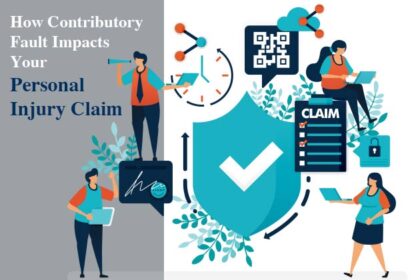For any CEO, one of the most pressing concerns in managing a business that operates on physical worksites is the risk of workplace injuries. Whether it’s a construction zone, manufacturing facility, warehouse, or retail environment, accidents can happen in the blink of an eye. The consequences extend far beyond medical costs, lawsuits, regulatory scrutiny, and reputational damage can follow if liability is not managed effectively.
Reducing liability for on-site injuries requires a proactive approach, a thorough understanding of safety regulations, and consistent follow-through on company-wide protocols. Leaders who prioritize safety not only protect their employees but also safeguard their company’s financial health and reputation.
Understanding the Scope of Liability
Liability for workplace injuries often falls on the employer under occupational safety laws. The degree of responsibility can depend on several factors, including whether the accident occurred during official work duties, the condition of the worksite, and the adequacy of safety measures in place.
In most cases, liability is tied to the concept of “duty of care.” This legal principle requires employers to take reasonable steps to prevent harm to employees and visitors. Failing to meet this standard, whether through lack of maintenance, inadequate training, or failure to enforce safety policies, can open the door to significant legal claims.
Common Causes of On-Site Injuries
On-site injuries vary depending on industry, but common hazards include slips and falls, falling objects, heavy machinery accidents, and exposure to harmful substances. Even in office environments, risks such as faulty wiring or improper storage can result in injury.
What many CEOs overlook is that accidents often arise from a combination of factors. A minor oversight, such as missing a routine equipment inspection, can compound with an employee’s inattention, creating a serious incident.
In industries like construction, safety education plays a pivotal role in risk reduction. Resources such as on-site accident injury tips can help companies refine their prevention strategies by focusing on hazard awareness, equipment handling, and site-specific protocols. While these may seem like operational details, they directly impact an organization’s ability to demonstrate due diligence if an accident leads to litigation.
Legal Implications for Employers
When an on-site injury occurs, the legal implications can be immediate. Workers’ compensation claims may be filed, which generally shield the employer from further liability in exchange for providing benefits. However, exceptions exist, particularly if gross negligence or willful misconduct can be proven.
Beyond workers’ compensation, personal injury lawsuits can arise if a third party, such as a contractor or equipment manufacturer, is involved. In these cases, liability may be shared, but the employer often still faces public and operational scrutiny.
Insurance as a Safeguard
Having the right insurance coverage is essential. General liability and workers’ compensation policies form the foundation, but CEOs should also evaluate specialized coverage for high-risk industries. Reviewing coverage limits and exclusions regularly ensures the policy matches the scope and scale of business operations.
A company’s ability to respond quickly after an accident, both medically and legally, can also affect liability outcomes. Clear incident reporting protocols help ensure accurate records, which are critical in defending against exaggerated or fraudulent claims.
The Role of Documentation
Documentation is a company’s strongest defense against liability claims. Maintenance logs, safety inspection reports, employee training records, and incident reports all demonstrate a commitment to safety.
These records can show that the company took reasonable precautions, maintained equipment properly, and trained employees adequately. Without such evidence, courts and regulators may view the organization as having neglected its duty of care.
For incidents that occur in specific jurisdictions, legal considerations may differ. For example, a personal injury accident in Cincinnati may involve state-specific rules that affect how liability is determined and what compensation may be available. CEOs should ensure their legal teams are aware of jurisdictional nuances, especially if the company operates in multiple states.
Creating a Culture of Safety
Reducing liability isn’t solely about compliance, it’s about embedding safety into the company culture. When leadership prioritizes safety, employees are more likely to adopt safe practices and report potential hazards.
Leadership Involvement
Visible commitment from executives sets the tone for the rest of the organization. Regular site visits, participation in safety meetings, and direct communication about safety priorities reinforce the message that it is everyone’s responsibility.
Continuous Training
One-time training sessions are rarely enough. Ongoing education ensures employees stay current on best practices and evolving safety standards. This training should address both general workplace safety and job-specific risks.
Employee Engagement
Encouraging employees to voice concerns, suggest improvements, and participate in safety planning can reveal hazards that management might otherwise overlook. A collaborative approach fosters accountability and shared responsibility.
Managing Contractors and Visitors
Many companies rely on contractors or have visitors present at worksites. These individuals may not be as familiar with site-specific safety protocols, increasing the risk of accidents. CEOs should ensure that contractors are vetted for their safety records and that all visitors receive an appropriate safety briefing before entering hazardous areas.
Contractor agreements should include clauses requiring adherence to company safety policies, and violations should have clear consequences. This approach not only protects workers but also strengthens the company’s position in the event of a liability dispute.
Responding to an Accident
The moments immediately following an accident are critical. A prompt and well-coordinated response can minimize harm and help control liability exposure.
Steps should include ensuring medical attention for injured parties, securing the scene to prevent further harm, notifying relevant authorities, and preserving evidence. Early communication with legal counsel and insurance providers is essential to guide next steps and avoid missteps in reporting.
The CEO’s Role in Liability Reduction
As the strategic leader, a CEO’s influence over safety and liability is significant. Allocating adequate resources for safety programs, championing proactive measures, and ensuring the company complies with all relevant regulations are part of the job.
By taking a long-term view of safety, not just as a compliance requirement, but as a core business value, executives can protect both their workforce and the company’s bottom line.










